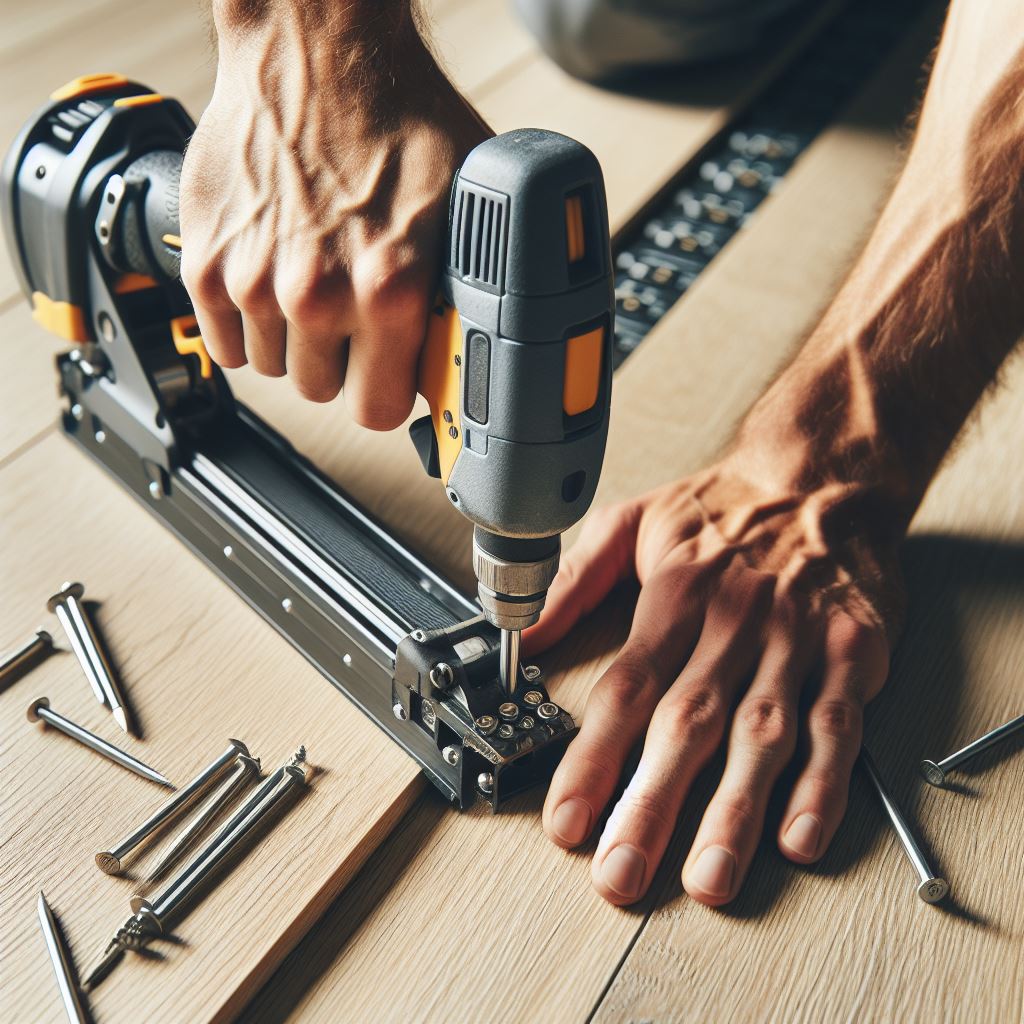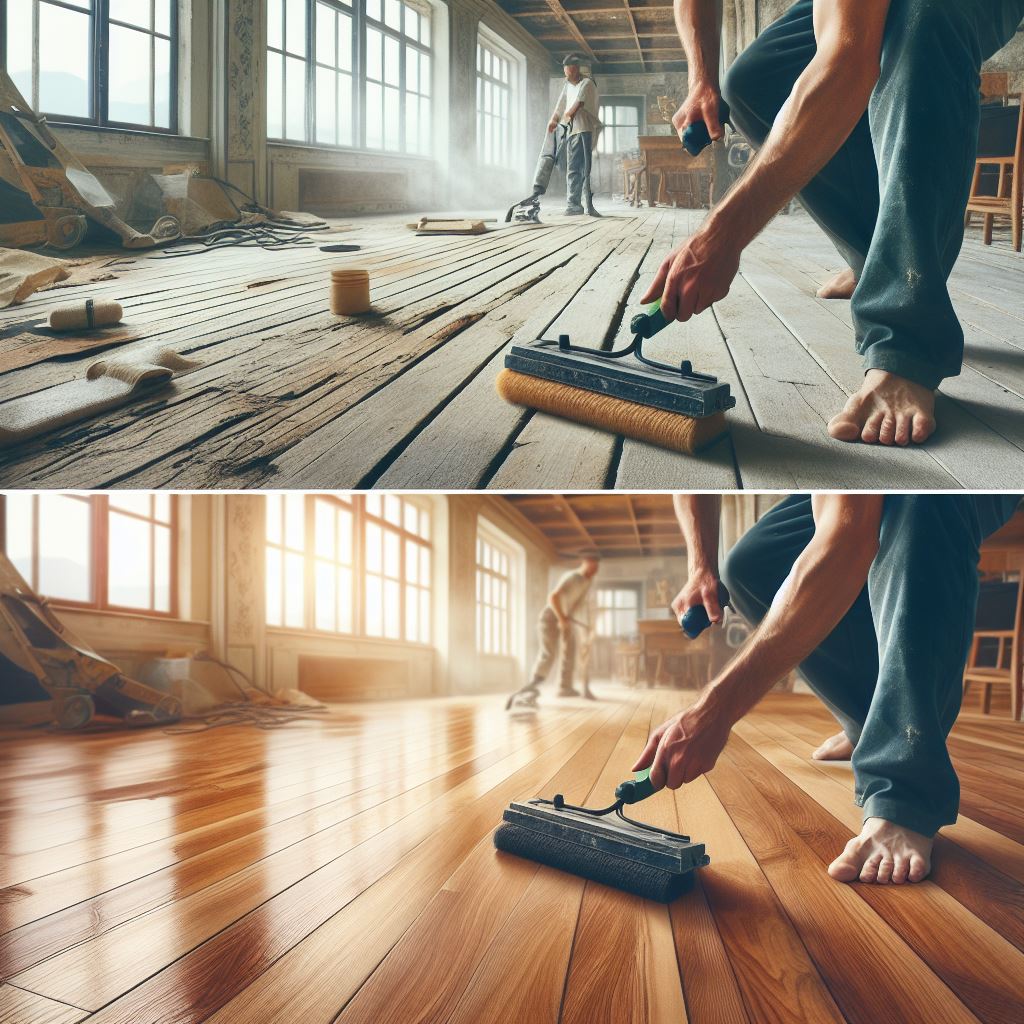Engineered wood flooring has become a popular choice for homeowners and commercial spaces alike, thanks to its *elegant appearance* and *durable construction*. Unlike traditional hardwood flooring, engineered wood is made up of multiple layers of wood veneers, laminated together to create a highly stable core. This structure makes it less susceptible to changes in temperature and humidity, which can be a common issue for solid hardwood floors.
One of the biggest advantages of engineered wood flooring is its versatility. It can be installed in various environments, including basements and over concrete slabs, where traditional hardwood might not be suitable. Moreover, the top layer of engineered wood is often made from high-quality hardwood, giving it the same *beautiful finish* and *natural grain patterns* that you would expect from solid wood.
Whether you're looking to revamp your home or upgrade your office space, engineered wood flooring offers a blend of aesthetics and performance that's hard to beat. At *Paradise Spaces*, we specialize in providing high-quality engineered wood floors that meet your specific needs and preferences. Request a free estimate or email us at sales@paradise-spaces.com to get started on your flooring project today!
Why Acclimation is Important

Acclimation is a crucial step in the installation process of engineered wood flooring. It involves allowing the flooring materials to adjust to the environment where they will be installed. This step is essential because engineered wood, like any wood product, can expand and contract based on the temperature and humidity levels of its surroundings.
When engineered wood floors are not properly acclimated, they can face several issues post-installation, such as *warping*, *gapping*, or *buckling*. These problems not only affect the floor's appearance but can also compromise its structural integrity. By acclimating the flooring, you ensure that the wood reaches a moisture equilibrium with the room's environment, minimizing the risk of these potential issues.
The process typically involves placing the unopened boxes of engineered wood flooring in the installation area for a specific period, usually between 48 to 72 hours. During this time, the wood can naturally adjust to the room's conditions. It's also essential to keep the room at a stable temperature and humidity level during this period to ensure optimal results.
Understanding why acclimation is important can save you from costly repairs and preserve the beauty and longevity of your engineered wood floors. Taking this extra step helps ensure a flawless installation, providing you with a floor that not only looks stunning but also stands the test of time.
How to Acclimate Engineered Wood Floors

Acclimating engineered wood floors is a straightforward but vital process that can significantly impact the longevity and appearance of your flooring. Here’s a step-by-step guide on how to properly acclimate your engineered wood floors:
- Unpack and Check: Start by unpacking the flooring materials and inspecting them for any visible damage. This initial check ensures that you are working with high-quality materials.
- Leave the Boxes Sealed: While it may be tempting to open the boxes immediately, it's generally recommended to leave them sealed during the acclimation period. This allows the wood to adjust to the room’s climate gradually.
- Place in the Installation Area: Position the sealed boxes in the room where the flooring will be installed. Make sure they are laid flat and spaced out to allow air circulation. Avoid stacking them in a single pile, as this can restrict airflow.
- Monitor the Environment: Maintain a stable room temperature between 60-80°F and a relative humidity level of 30-50%. Use a hygrometer to keep track of these conditions throughout the acclimation period.
- Allow Time: Typically, engineered wood floors need to acclimate for at least 48 to 72 hours. However, check the manufacturer’s guidelines as some may recommend a longer period.
- Check Moisture Levels: Before starting the installation, use a moisture meter to check the moisture content of the wood. It should be within 2-4% of the subfloor’s moisture content to ensure compatibility.
By following these steps, you can ensure that your engineered wood flooring is well-acclimated and ready for a smooth installation. Proper acclimation not only helps in achieving a flawless finish but also contributes to the long-term durability of your floors.
Factors Affecting Acclimation Time
Several factors can influence the acclimation time of engineered wood floors, and understanding these can help you plan your installation more effectively. Here are the key factors to consider:
- Climate and Season: The local climate and seasonal changes play a significant role in acclimation. In humid summer months, wood tends to absorb more moisture, while in dry winter months, it can lose moisture rapidly. Adjust your acclimation time based on the prevailing weather conditions.
- Room Conditions: The specific conditions within the room where the flooring will be installed are crucial. Ensure that the room is climate-controlled and that the HVAC system is operational to maintain consistent temperature and humidity levels.
- Type of Subfloor: The material and moisture content of the subfloor can affect how quickly the engineered wood acclimates. Concrete subfloors, for instance, may require a longer acclimation period compared to plywood subfloors due to their higher moisture retention.
- Packaging: The way the engineered wood is packaged can also impact acclimation. If the flooring comes in tightly sealed plastic, it may take longer to acclimate as the wood is initially isolated from the room's environment.
- Wood Species: Different wood species have varying rates of moisture absorption and release. Exotic hardwoods, for example, might require more time to acclimate compared to domestic species.
- Thickness and Construction: The thickness of the engineered wood planks and their construction (number of layers, type of core) can influence the acclimation period. Thicker planks or those with a denser core might need additional time to adjust.
By considering these factors, you can more accurately determine the appropriate acclimation time for your engineered wood floors. Proper acclimation is essential to avoid issues like warping, gapping, and buckling, ensuring your floors look beautiful and perform well over time.
Common Mistakes During Acclimation

Acclimating engineered wood floors is crucial for a successful installation, but several common mistakes can undermine the process. Being aware of these errors can help you avoid them and ensure your floors are perfectly prepped:
- Skipping the Acclimation Process: One of the most frequent mistakes is bypassing acclimation altogether. Some may assume that engineered wood doesn't need this step, but failing to acclimate can lead to significant issues like warping and buckling.
- Inadequate Time: Rushing the acclimation process is another common error. Each type of engineered wood requires a specific amount of time to adjust to the room conditions. Refer to the manufacturer’s guidelines to determine the appropriate duration.
- Improper Storage: Storing the wood in a garage, basement, or other unsuitable areas before acclimation can expose it to extreme temperatures and humidity. Always store the flooring in the room where it will be installed.
- Neglecting Room Conditions: Not maintaining ideal room conditions during acclimation can affect the wood’s ability to adjust. Ensure that the room's temperature and humidity levels are consistent and within recommended ranges.
- Ignoring Subfloor Moisture: Overlooking the moisture content of the subfloor can cause problems. High moisture levels in the subfloor can lead to moisture absorption by the wood, causing expansion and damage. Use a moisture meter to check and balance subfloor moisture levels.
- Stacking Wood Incorrectly: How you arrange the wood planks during acclimation matters. Placing them directly on the floor or in a tightly packed stack can restrict airflow. Instead, spread them out or stack them in a crisscross pattern to ensure even acclimation.
By understanding and avoiding these common mistakes, you can ensure that your engineered wood floors acclimate properly, leading to a smoother installation process and a more durable, beautiful floor.
Benefits of Proper Acclimation

Properly acclimating engineered wood floors before installation offers a multitude of benefits that contribute to the longevity and aesthetic appeal of your flooring. Here are some of the key advantages:
- Minimized Risk of Damage: Acclimation reduces the chances of warping, buckling, and gaps forming between planks. This ensures that your floors remain flat and stable over time.
- Enhanced Durability: When wood adjusts to the environment prior to installation, it becomes more resilient to changes in temperature and humidity. This means your floors will stand the test of time, even in fluctuating conditions.
- Improved Aesthetic Appeal: Proper acclimation ensures that planks fit together seamlessly, providing a more uniform and visually pleasing appearance. This is crucial for achieving that high-end, polished look.
- Cost-Effectiveness: By preventing potential problems like warping and gaps, acclimation can save you money on repairs and replacements in the long term. This makes it a cost-effective step in the installation process.
- Better Performance: Floors that are properly acclimated are less likely to make creaking noises and will provide a more solid underfoot feel. This enhances the overall performance and comfort of your flooring.
- Peace of Mind: Knowing that you've taken all the necessary steps to prepare your flooring can give you peace of mind. You can rest assured that your investment is protected and will perform as expected.
By ensuring proper acclimation, you set the stage for a flawless installation that maximizes the beauty and durability of your engineered wood floors. If you’re ready to take the next step, request a free estimate or email us at sales@paradise-spaces.com today!
